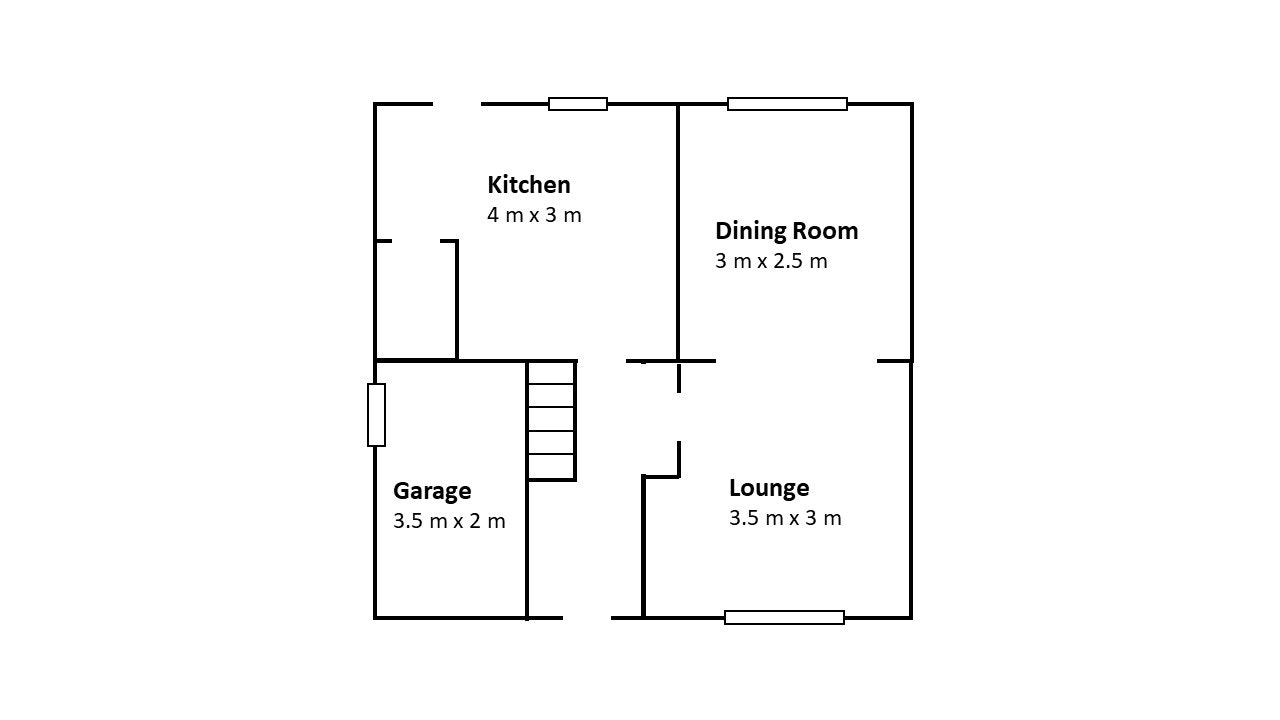EEI CAST Test: Construction & Skilled Trades Practice Test Guide
Updated November 20, 2023
- What Is the EEI Cast Test?
- What to Expect When Taking the EEI Cast Test
- What Companies Use the EEI Cast Test?
- CAST Test Scoring System
- What Are the Sections of the CAST Test?
empty
empty
empty
empty
- How to Prepare for the CAST Test in 2025
- CAST Test - On the Day
empty
empty
empty
empty
- Frequently Asked Questions
- Final Thoughts
What Is the EEI Cast Test?
The EEI CAST (Construction and Skilled Trades) test is used as part of the recruitment process of many US utility companies.
If the role you have applied for is in transmission and distribution, facilities and repair, electrical repair, machining and vehicle repair, or meter service and repair, you will take the EEI Construction and Skilled Trade Selection System examination (CAST) Test.
The EEI Cast aptitude tests is used in the construction and skilled trade to assess the suitability of candidates for jobs in this field.
The CAST test may also be used to assess whether existing employees can take on more responsibility, possibly moving into leadership roles.
Founded back in 1933, the EEI or Edison Electric Institute represents many US electric companies.
The CAST test assesses aptitude by testing four key skills: graphic arithmetic, mathematical usage, mechanical concepts, and reading comprehension. The CAST test is considered to be the most generic battery of tests created by the EEI.
What to Expect When Taking the EEI Cast Test
You can expect to face the CAST test if you work in any of the following construction and skilled trade careers:
- Transmission and distribution
- Electrical repair
- Vehicle and machine repair
- Meter service and repair
- Facilities and repair
- Other facilities roles, such as carpenter
The CAST test is a paper-based exam maintained by the EEI (Edison Electric Institute) but generally administered by the individual utility company.
Each employer decides how best to score the CAST test to suit their recruitment requirements.
The whole CAST exam is 110 questions, divided into these four sections. The whole test takes 87 minutes, although you will usually be in the test situation itself for around two hours.
You should brush up on your basic arithmetic and skills such as converting measurements from one type to another, high school level algebra and other types of math that you might encounter in your day to day work.
What Companies Use the EEI Cast Test?
Many US utility companies use the EEI Cast test as a screening process as part of their recruitment. These include:
- Southern Energy
- Hawaiin Electric
- The PSEG Foundation
- Centerpoint Energy
- Entergy
- NextEra Energy
- Duke Energy
- First Energy
- Edison International
...and many others.
Some companies may charge a fee to sit the test which is then reimbursed if you are successfully hired. As the test is administered by the individual companies and not by the EEI itself, the process differs by company.
It also means that there is no published data about how many candidates sit the test each year, what the average score is or even what the desired pass mark is, since all that data remains with each company.
CAST Test Scoring System
The CAST test is paper-based and entails 110 multiple-choice questions in four separate sections:
- Graphic Arithmetic
- Mechanical Concepts
- Reading Comprehension
- Mathematical Usage
The test is administered over two hours but the total time limit for answering questions is one hour and twenty-seven minutes.
Practice Cast Test with JobTestPrep
You will not be allowed to take a calculator, dictionary or another resource into the test.
The scores from each section are totaled to create an Index Score.
This is then rated from 1 to 10, where 10 is the most favorable score.
The 1 to 10 rating is decided by the employer and in consideration of the specifics of the job.
There is no generally accepted pass or cut-off score as each employer decides what they deem acceptable.
Practice Cast test with JobTestPrep
What Are the Sections of the CAST Test?
The CAST test is split into four separate sections:
Graphic Arithmetic Practice Test
This section of the CAST test features 16 questions and has a time limit of 30 minutes.
You will be presented with two drawings (for example, blueprints or floor plans) and asked several questions on each.
This test is about interpreting and understanding visual data in the form of prints, drawings and charts. You may also have to solve arithmetic problems using the data contained in the drawing or chart using mental arithmetic or elementary algebra.
For example:

The floor plan of the ground floor of a house are shown above.
What is the area of the Lounge in m2 to two decimal places?
a) 9.55
b) 10.50
c) 10.75
d) 10.30
Mechanical Concepts
Mechanical principles or concepts include force, pressure, friction, acceleration, velocity and so on. This test measures your ability to interpret and understand these concepts using drawings representing a mechanical situation (such as centrifugal force, or a lever, pulley, or gear, for example) and then asking a question, followed by three possible answers.
This section features 44 questions and a time limit of 20 minutes.
Questions may include principles such as levers, pulleys, gravity, gears and shapes.
For example,

If Cog A turns clockwise, what will happen to Cog B and Cog C?
a) Cog B will turn counterclockwise, and C will turn clockwise
b) Cog B will turn counterclockwise, and C will turn counterclockwise
c) Neither cog will be able to move
If you need to prepare for a number of different employment tests and want to outsmart the competition, choose a Premium Membership from JobTestPrep.
You will get access to three PrepPacks of your choice, from a database that covers all the major test providers and employers and tailored profession packs.
Reading for Comprehension
The ability to read and understand written information is an important part of any construction or skilled trade-related career, especially concerning health and safety.
This section features 32 questions and a time limit of 30 minutes.
You will be presented with four passages, each of which is accompanied by several questions about that passage.
For example:
Between 2018 and 2019, confidential calls to the ASPCA about puppy farming rose by 35%. This rise could be attributed to the demand for designer dogs seen on social media sites like Instagram, where photos of Sausage Dogs (or Dachshunds to give their proper name) and Pugs have increased in likes by 500%. Additionally, breeds like French bulldogs have increased in popularity in recent years due to celebrity promotion and endorsement.
Hashtags like #puppiesforsale and #dogsofinstagram have been accused of unwittingly feeding into the hands of puppy farmers. The platform has been accused of turning a blind eye to animal welfare issues. However, animal groups like the ASPCA have used the platform to promote rehoming to great success.
Puppies born at a puppy farm are more likely to have behavioral issues, infectious or inherited diseases and may have a shorter life-span. They are more likely to be aggressive or fearful and often have to be put down. Vet trips for puppy-farmed dogs will be significantly more frequent than for other types of puppy.
More than 50,000 dogs are left without a home in shelters every year. There is a common misconception that dogs in shelters have something wrong with them; however, most dogs up for adoption are healthy, vaccinated and fully assessed and will be placed with the right family for their needs. They are usually significantly cheaper than puppy farmed dogs, as most shelters will only ask for a donation and will usually pay for any vet treatment that is necessary long-term.
1. Why are puppies from shelters significantly cheaper?
a) The purchase price is a set price
b) Only donations are usually required not a purchase fee
c) Only cheaper breeds are available from shelters
d) There is no financial cost at all to taking a rescue dog
2. Which breeds have increased in popularity due to celebrity endorsement?
a) French bulldog
b) Dachshunds
c) Pugs
d) Labradoodles
Mathematical Usage
This section features 18 questions with the shortest time limit of the test of 7 minutes.
Just like the Graphic Arithmetic section, you will be expected to demonstrate your math skills in the context of construction and the skilled trades, including basic arithmetic, algebra and measurements.
Your ability to solve math problems based on the information to hand is the main focus of this section.
For example:
Your most recent delivery included 1,100 bricks. If you have already used 17% of the bricks, how many do you have left?
a) 1,013
b) 917
c) 913
d) 897
e) 893
Add the following sets of objects:
Set A: ● ● ● Set B: ● ● ● ●
Divide 18 dots into three equal groups.
How to Prepare for the CAST Test in 2025
It is advised that you prepare in the run-up to the day to give yourself the best chance possible of a good performance.
Step 1. Take Practice Papers
There are plenty of practice papers and sample questions available online. Some are free to source, others come at a cost, while some preparation courses are subscription-based.
The advantage of using practice resources is the chance to familiarise yourself with the format of the CAST test questions and improve the skills needed to arrive at a successful score.
Practice papers, courses and sample questions can be sourced from:
Step 2. Practice Against the Clock
The CAST test has a strict time limit for each section:
- 30 minutes for Graphic Arithmetic
- 20 minutes for Mechanical Concepts
- 30 minutes for Reading Comprehension
- 7 minutes for Mathematical Usage
Use this knowledge to your advantage by practicing each section within the relevant time limit.
The final section, Mathematical Usage, poses your biggest challenge by asking you to answer 18 questions in only 7 minutes.
Timed practice will:
- Demonstrate how long you can spend on each type of question
- Improve your response time
- Develop your confidence and reduce your exam-tension
Step 3. Discover Where Your Strengths and Weaknesses Lie
Use the practice papers to find out exactly which skills could benefit from some improvement.
For example, if you excel at the math and mechanics sections, but have difficulty with the comprehension section, spend extra time on that.
Not only will this extra practice improve your skill set, but it will also boost your confidence that you are a well-rounded candidate.
Step 4. Focus Equally on All Sections
There are two main reasons you might avoid a particular section of the CAST test in your preparation.
First, you may feel so confident in your skills that you think you do not need to practice.
Second, you may avoid a section because you do not like mechanics or algebra.
For example, or you feel under-confident in that area.
One of the main reasons to take practice papers and work on sample questions is to familiarise yourself with the questions you will face in the CAST test.
It is, therefore, important that you focus equally on all four sections of the test in your preparation.
Step 5. Learn the Question Formats
Read through practice papers to find out what the questions in each section have in common.
Beyond the subject matter, mechanics or comprehension, what format do they take?
- Which are accompanied by a diagram?
- How long are the passages in the Reading for Comprehension section, and what topics do they discuss?
- How many require quick calculations, and which allows you time to use the formula?
Knowing the question formats before you undergo the actual CAST test will reduce your response time because you already know what to look for.
Step 6. Revise Fundamental Mechanical Concepts
Revisit the subject of fundamental mechanical concepts.
You may not have touched on this topic since high school, or you may have only used some aspects of mechanics in your working life.
Either way, improving your knowledge of mechanics can only boost your chances of a successful CAST test score.
Test practice papers will come in useful, but you should also search online for mechanics resources.
For example this Fundamental Principles of Mechanics paper by Research Gate or the Flipping Physics YouTube channel.
Step 7. Develop Your Reading Comprehension
Reading comprehension goes beyond simply being able to read a passage of text or a set of instructions.
It requires that you understand what you have read and can relay that information in your own words.
Improve your reading comprehension by:
- Building your vocabulary – Read widely: read fiction, news articles, professional journals, and magazines
- Once you have read an article or passage of text, ask yourself questions about it – Do your best to answer your question without looking back at the article, and then check your answer against the text itself
- Pick out the key points of a passage of text – Write a summary of them in your own words
Step 8. Make Sure You Are Mentally and Physically Fit
Make sure you get enough sleep regularly. Eat a nutritionally healthy diet. Stay active. Drink plenty of water to keep your body and brain hydrated.

Practice Cast test with JobTestPrep
CAST Test - On the Day
Once you have prepared for the CAST test and the day arrives, there are still things you can do to perform well.
Arrive on-Time and Prepared
Make sure you arrive on time and that you have everything you need. Take a form of valid and current photo ID with you.
This must show:
- Your name exactly as it is stated in your application
- Your signature
- A recent photograph of you that is recognizable
You must not take any items into the test room. For example, your mobile phone or a calculator.
In some instances, a smartphone may not be allowed. Check with the employer for a definitive list.
Read Each Question Carefully
Read each question carefully so you know exactly what you are being asked to do. It may be helpful to pick out the key points of each question before you answer.
If you do not understand a question, reread it and break it down into its components.
Remember the Time Limit
Each section of the CAST test has a time limit; therefore, consider that in mind when tackling questions.
Do not spend too long on any one question to the point that you have to rush through the following questions.
What if You Do Not Know the Answer?
If you are unsure of the answer or have no idea, you have two options.
First, you can make your best guess.
Second, you can leave that question for now and return to it when you have answered the other questions in that section.
Frequently Asked Questions
The EEI CAST (Construction and Skilled Trades Test) is a pre-employment assessment test used in the construction and skilled trades industries. It is designed to assess an individual's aptitude for various jobs within these industries, including positions such as electricians, linemen, plumbers, and other skilled trades roles.
To pass the CAST test, you typically need to achieve a score that meets the specific requirements set by the employer or industry. Passing scores can vary depending on the job and employer.
Scoring for the CAST test is based on the number of correct answers. There is usually no penalty for incorrect answers, so it's advisable to attempt all questions. Employers may have different score thresholds for passing, so you should check with the specific employer for their requirements.
The duration of the CAST test can vary, but it typically takes around 2 to 3 hours to complete.
The difficulty of the CAST test can vary depending on the specific job and industry. It is designed to assess your knowledge and skills related to the construction and skilled trades, so the difficulty level may vary based on your background and experience.
The use of a calculator may be allowed or restricted depending on the employer's policies or the specific version of the CAST test being administered. It's important to check with the testing provider or the employer to determine whether you can use a calculator.
The EEI CAST test is commonly used for assessing candidates for a wide range of skilled trades and construction-related job roles. This may include positions such as electricians, linemen, mechanics, welders, and more.
Many companies in the construction and skilled trades industries use the EEI CAST test as part of their hiring process. These companies can vary by location and industry sector, so it's essential to check with the specific employer you're applying to for information about their testing requirements.
When taking the EEI CAST test, you can expect questions related to various aspects of the construction and skilled trades, including math, mechanical comprehension, spatial awareness, and electrical concepts. The specific content and format may vary, so it's advisable to prepare by reviewing relevant materials and practice tests if available.
Final Thoughts
Whether you undertake the CAST test as part of a recruitment process or to further your existing career in the construction or skilled trade industries, the best ways to improve your chances of a successful score are to:
- Take full advantage of practice papers and sample questions
- Practice against the clock
- Familiarize yourself with the type of questions in the CAST test
- Improve your math, mechanics, and reading comprehension skills
- Work on your weak areas, and your strengths
- Arrive on time and prepared




